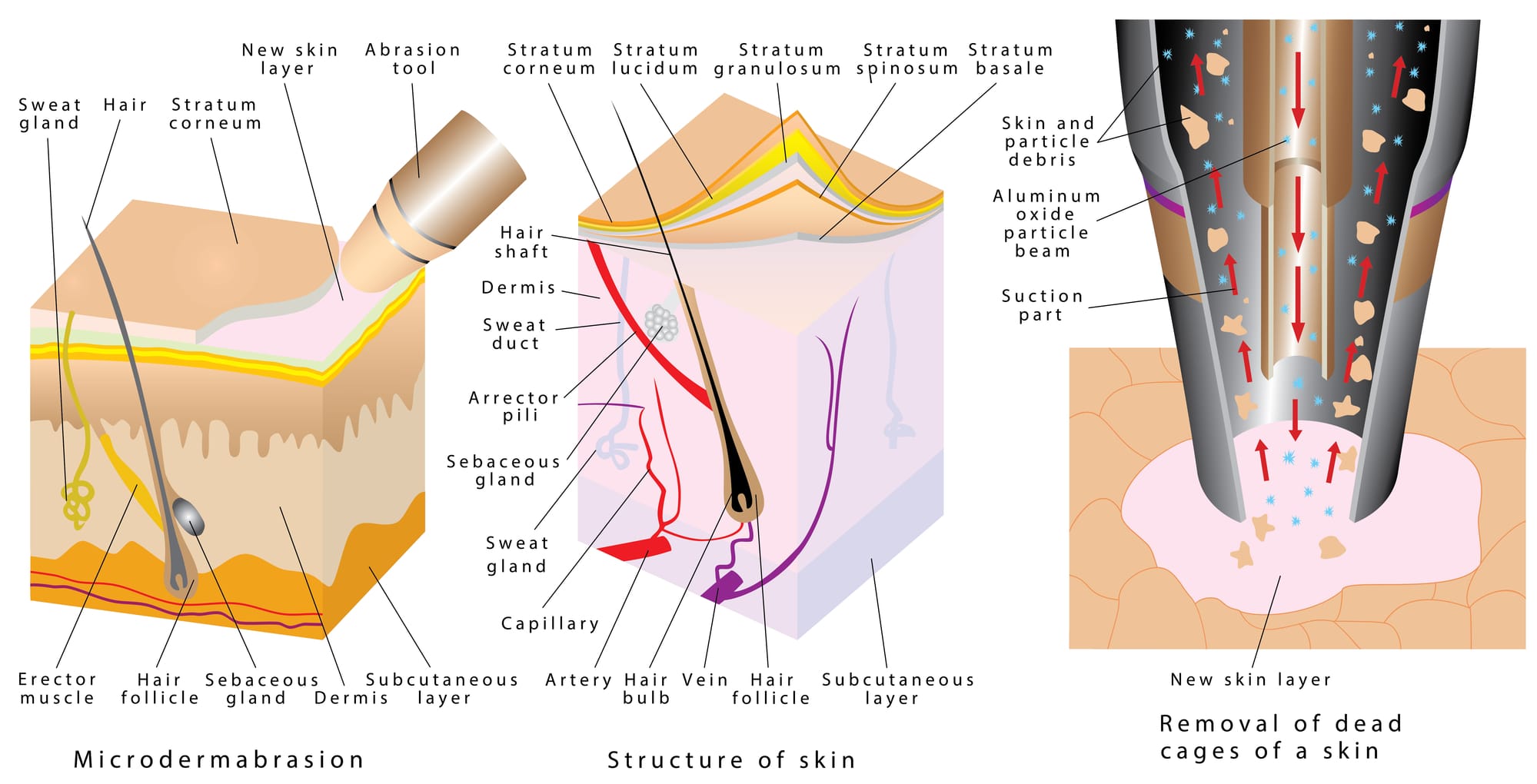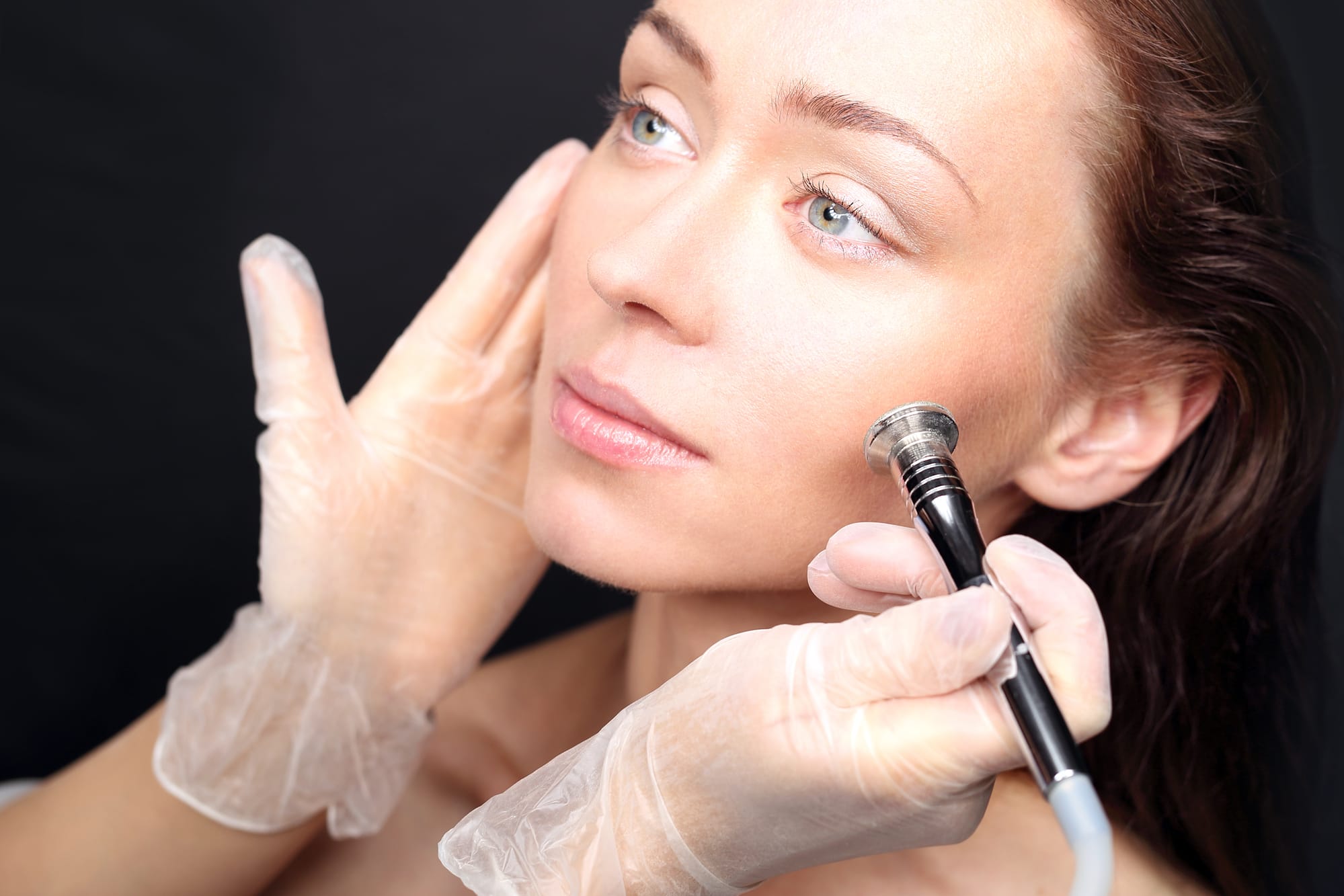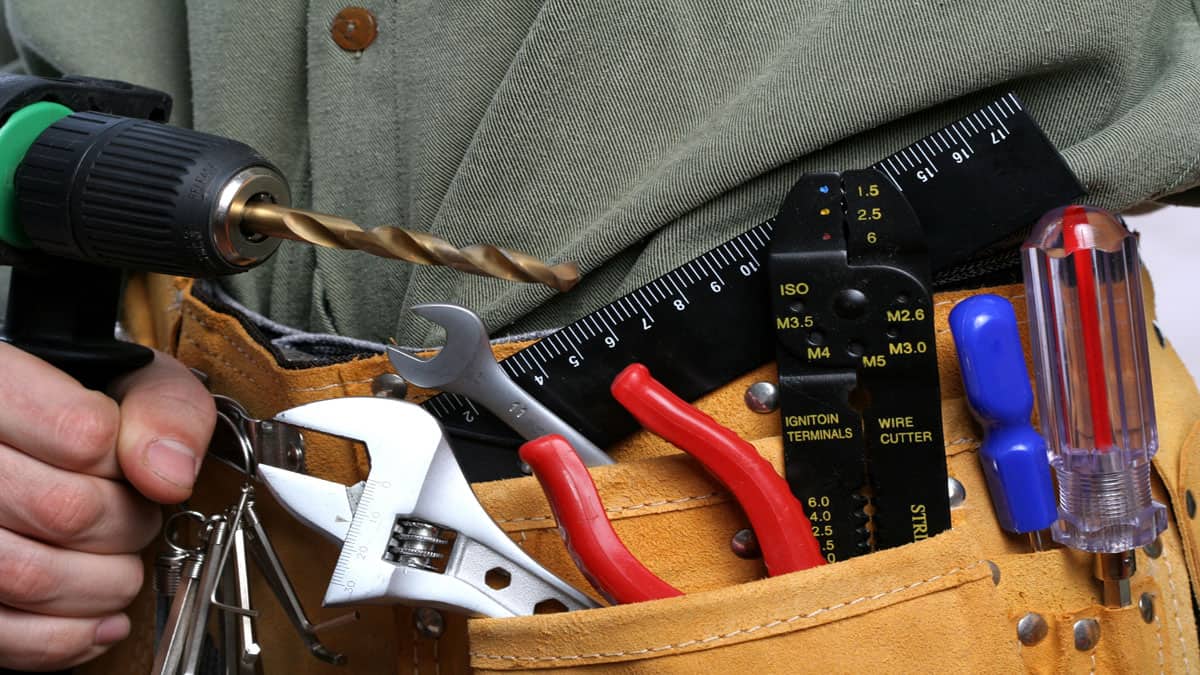Diamond microdermabrasion is the latest in anti-aging treatments, favored for its accuracy and control. Dive in to discover how it can turn back the clock on your skin.

Diamond microdermabrasion is your go-to for diminishing wrinkles, smoothing out blemishes, and enhancing skin texture and tone. This gentle, non-invasive treatment steps up from traditional microdermabrasion by using diamond tips instead of crystals for exfoliation. Curious and never tried it? You're in the right spot! In this article, we’ll explore what diamond microdermabrasion is, its benefits, cost, and more.
What is Diamond Microdermabrasion?
Diamond microdermabrasion is the latest buzz in the beauty world, quickly becoming a favorite for its gentle yet effective results. In this procedure, a skilled clinician or nurse injector uses a diamond-tipped wand to gently exfoliate the skin, whisking away dead cells and then vacuuming them up through the same wand. It's a completely painless experience, with most people only feeling a slight tingling sensation. Get ready to embrace smoother, fresher skin with this innovative treatment!

It stands out for its safety, as it leaves no residual crystals on the skin that could get into the eyes or be inhaled, avoiding any temporary breathing issues. The diamond-tipped wand in this procedure expertly removes the skin's top layer, unveiling fresh, new skin beneath. This not only reveals a brighter complexion but also stimulates collagen production, boosting the skin's elasticity, firmness, and overall health.
Benefits of the Diamond Microdermabrasion
Diamond microdermabrasion isn't just great for smoothing out wrinkles and blemishes; it's a powerhouse for various skin improvements. Here's what it can do:
Boosts Texture and ToneFuels Collagen ProductionEnhances Skin HealthReduce Scar AppearancePre- and Post-Care Tips
To get the most out of your diamond microdermabrasion treatment, here are some key tips to follow. Before your session, steer clear of skincare products with retinol, AHAs, benzoyl peroxide, or salicylic acid. These can pre-exfoliate the skin, and combining them with microdermabrasion might be too harsh.
Post-treatment, your skin will need some extra care. Hydrate it well with a rich moisturizer, and don't forget broad-spectrum sunscreen to shield against the sun. Also, give hot showers, saunas, steam rooms, strenuous exercise, and extreme temperatures a miss for 24 hours. And, give your skin a makeup-free day to breathe and recover.
Questions to Ask Your Dermatologist
Trying out a new cosmetic treatment like diamond microdermabrasion can be a bit nerve-wracking. To ease your worries and make sure it's the right fit for you, don't hesitate to ask your healthcare provider some key questions. Consider these essential ones:
"How many sessions will I need?""How often should I get treatments?""Are there any potential side effects I should know about?""How should I prep my skin before the treatment?""What are the best post-treatment skincare practices?"How Much Does It Cost?
Its cost can differ based on how many sessions you need and where you're located. Typically, you might pay between $75 and $250 for one treatment.

Potential Risks and Side Effects
Redness and Swelling: It's normal for your skin to appear red and feel a bit swollen right after the treatment, but this usually fades within a few hours.Dryness: The exfoliation might make your skin dry or flaky. Combat this by applying a rich moisturizer or oil post-procedure.Breakouts (Purging): Don't be surprised if you see some breakouts a few days post-treatment. This happens as the procedure speeds up cell turnover, pushing impurities to the surface. This is a normal reaction and should calm down within 10-14 days.Alternatives to Diamond Microdermabrasion
If diamond microdermabrasion isn't your thing, there are several other cosmetic treatments to consider. Always check with a dermatologist to find the best fit for your skin concerns.
Chemical Peels: These involve a chemical solution that peels away the top layer of skin, revealing a smoother layer underneath. Chemical peels can penetrate deeper than microdermabrasion, reaching the middle skin layer for more significant results.
Laser Skin Resurfacing: This method uses focused light beams to remove outer skin layers and boost collagen production. It's generally more intensive than microdermabrasion and comes with a longer recovery period.
Microneedling: Using tiny needles, microneedling creates small punctures in the skin, triggering a natural healing and collagen-producing response. It's effective for deeper skin issues like acne scars and stretch marks, going beyond what microdermabrasion can do.
Dermaplaning: More than just shaving, it uses a scalpel to gently remove dead skin cells and fine facial hair. It offers results similar to microdermabrasion and is in a similar price range.














